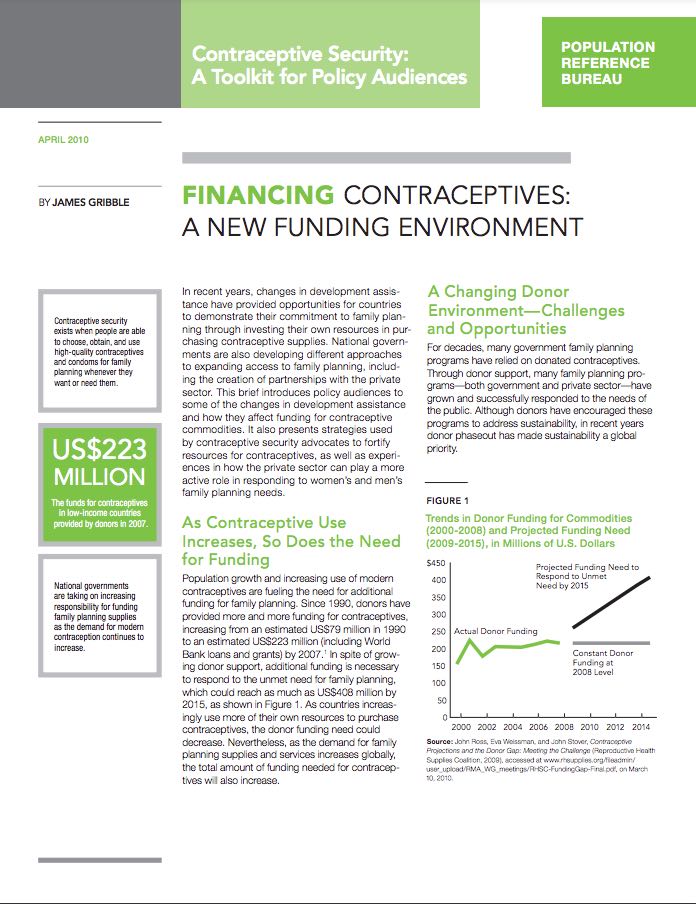
Financing Contraceptives: A New Funding Environment
Date
May 27, 2010
Author
(May 2010) In recent years, changes in development assistance have provided opportunities for countries to demonstrate their commitment to family planning through investing their own resources in purchasing contraceptive supplies. National governments are also developing different approaches to expanding access to family planning, including the creation of partnerships with the private sector. This brief introduces policy audiences to some of the changes in development assistance and how they affect funding for contraceptive commodities. It also presents strategies used by contraceptive security advocates to fortify resources for contraceptives, as well as experiences in how the private sector can play a more active role in responding to women’s and men’s family planning needs.
This is one of seven PRB policy briefs that make up Contraceptive Security: A Toolkit for Policy Audiences, a series designed to explain different aspects of contraceptive security to policymakers, program managers, media, and civil society. Contraceptive security exists when people are able to choose, obtain, and use high-quality contraceptives whenever they want or need them. This brief addresses changes in development assistance and how national governments are increasingly identifying ways to pay for the contraceptive needs of women and men.
The other briefs in the toolkit are:
- Contraceptive Security For Policy Audiences: An Overview (PDF: 558KB)
- Planning for Contraceptive Security: Start With SPARHCS (PDF: 699KB)
- Procuring Contraceptives: Options for Countries (PDF: 647KB)
- Supply Chain: Getting Contraceptives to Users (PDF: 758KB)
- Policy Environment: Understanding the Context for Contraceptive Security (PDF: 653KB)
- Priority Actions and Recommendations for Contraceptive Security (PDF: 374KB)
James Gribble is vice president for International Programs at the Population Reference Bureau.

 ">
">